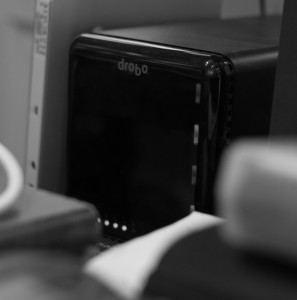I’ve been contemplating how to achieve immortality. I’m sure you often do the same thing over breakfast on a sunny morning.
It has often occurred to me that, since so much of my output is in digital form, it may vanish without a trace once I’m gone, since nobody will be paying the hosting fees. Had I written more things that had made it into print, they might at least have lingered in the dark recesses of a library somewhere for a rather longer period. Perhaps even gather dust on one or two people’s bookshelves. Probably nobody would ever read them, but it would be comforting to know that they were there!
In reality, of course, digital data should last a lot longer, as long as it’s maintained. If I were really wealthy and cared enough about this vanity project, I would leave behind an invested sum big enough to pay for web hosting in perpetuity plus one day per year of an IT consultant’s time to update the formats, check the backups, etc.
Fortunately, though, I have some hope that my 20+ years of blog posts won’t just vanish into the ether when Rose forgets to pay the web hosting bill after I’m gone, partly because there are periodic snapshots on the wonderful Internet Archive. (Here’s what Status-Q looked like in early 2001.)
Brewster Kahle, the man behind the Archive, was good enough back in 2005 to give me a tour of their headquarters, which was then located in the Presidio of San Francisco. Brewster’s an inspiring guy doing important work, and a much better use for my hypothetical legacy would be to leave it to them. I wonder if they would guarantee, in exchange, to keep my memory alive, in much the same way that donors to religious organisations used to get prayers said in perpetuity for their departed souls….
But then I started wondering about the next stage.
If you were to train an AI system on all of my blog posts, YouTube videos, academic papers, podcast & media interviews, etc… how convincingly could you get it to respond to questions in the way that I would have done? Perhaps a deepfake video character could even give future interviews on my behalf? I can’t quite decide whether that’s exciting, or thoroughly creepy.
But I tell you what… I do think it’s inevitable.
Perhaps not for me: I imagine that when I’m gone a few friends will shed a quiet tear and everyone else will breathe a huge sigh of relief and switch the servers off. But for others; those more prolific, more wise, more entertaining, I think this is bound to happen. You will be able to ask questions of Mother Theresa, or Christopher Hitchens, or the Dalai Lama, or Warren Buffet. You’ll be able to get Handel to compose your wedding march, and Peter Ustinov to speak at the reception afterwards. And for a bit of spiritual advice, you could always ask God. Or a ChatGPT engine trained exclusively on his revelations to mankind from whichever source you prefer them.
Today’s systems would, of course, do a very fallible job, but what will the AI systems be like in 100 years’ time? That will only help you, of course, if they still have access to your data, in non-proprietary, open, standard formats. In the past, if you had sufficient wealth, you might have chosen to spend it on Cryonics. I can’t help feeling that to achieve immortality now, a better bet would be to spend it on good, globally-accessible backups of your data.

 Mmm. I seem to have had a lot of hard drive failures recently – Seagate drives, mostly, though, to be fair, the majority of my drives are Seagate just because my favourite supplier happens to like them, so I would expect see more failures there. The last one, though, is just 18 months old and has started making ominous clicking noises. They don’t make ’em like they used to. Stuff I’ve read online tends to suggest that it’s hard to assign blame to particular drive manufacturers, but particular models do tend to have rather different failure rates.
Mmm. I seem to have had a lot of hard drive failures recently – Seagate drives, mostly, though, to be fair, the majority of my drives are Seagate just because my favourite supplier happens to like them, so I would expect see more failures there. The last one, though, is just 18 months old and has started making ominous clicking noises. They don’t make ’em like they used to. Stuff I’ve read online tends to suggest that it’s hard to assign blame to particular drive manufacturers, but particular models do tend to have rather different failure rates.
Recent Comments